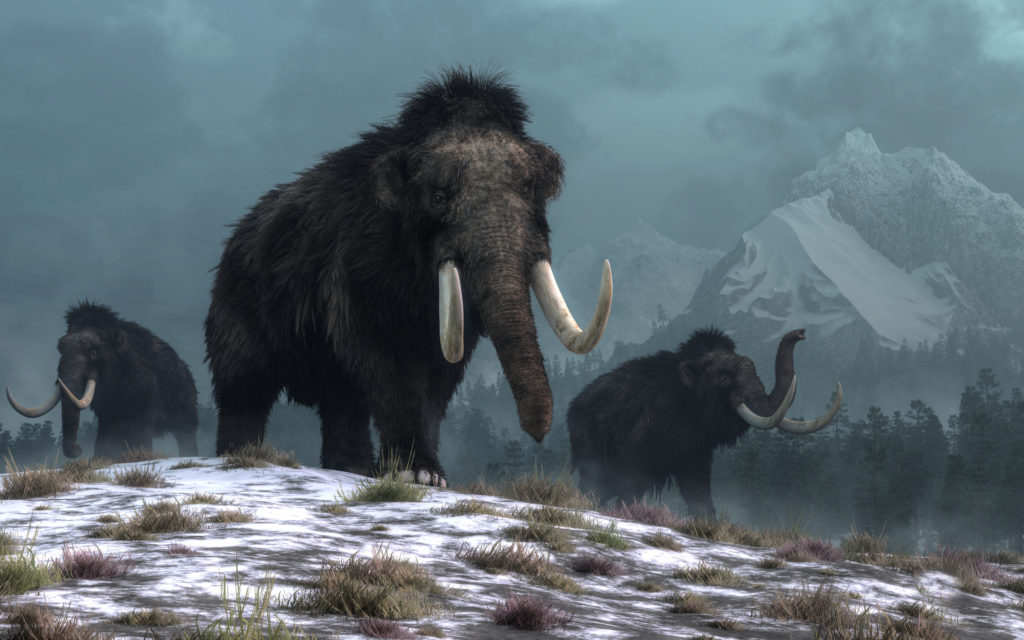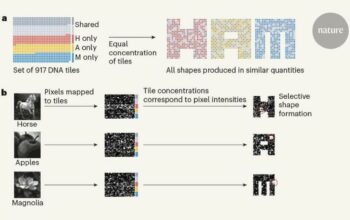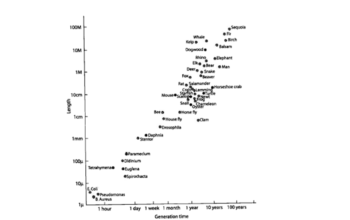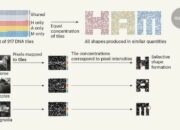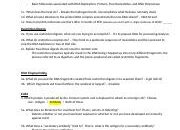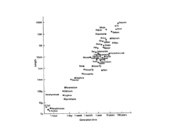The intricate dance of life, encapsulated within the helix of DNA, has long captivated the scientific community. This molecular enigma not only encompasses the blueprint of biological organisms but also serves as a profound testament to the complexity of genetic coding. As researchers delve deeper into the labyrinth of genetic information, a fascinating phenomenon emerges, where concepts of gravity and time intertwine with the very essence of DNA’s structure. The metaphor of “dangled DNA” serves as an evocative illustration of this process, suggesting that the reading of genes is analogous to allowing the forces of nature to unveil the secrets encapsulated within our genetic framework.
Diving into the realm of genetics, one must first grasp the foundational structure of DNA itself. Deoxyribonucleic acid, composed of nucleotides, is essentially the instruction manual for the synthesis of proteins, which in turn shape the complexities of cellular function. However, this manual does not simply remain static—instead, it exhibits a dynamic interplay with its surrounding environment. This dynamic relationship prompts the inquiry: how can external forces, such as gravity, influence genetic expression and decoding?
The notion of gravity, fundamentally a force that draws objects toward one another, may seem remote from the microscopic world of nucleic acids. However, on closer inspection, the role of gravitational forces in biological systems is undeniably profound. As DNA strands become “dangled,” influenced by gravitational pulls, they metaphorically embody the potential to unravel their own sequences, akin to a marionette responding to the deft movements of a puppeteer. This imagery highlights a unique interplay between physical forces and the molecular mechanisms underlying genetic reading, providing a nuanced comprehension of gene expression.
Moreover, the concept of dangling DNA can be expanded to encompass ideas of gravitational interactions, elucidating how the spatial orientation of DNA influences its accessibility for transcription and replication. The spatial configuration of chromatin—a complex of DNA and protein—can shift in response to various stimuli, including mechanical forces that may be analogous to gravitational effects. Such reshaping of chromatin architecture can either expose or obscure regions of genetic material, leading to differential gene expression. Envisioning DNA in this manner not only elucidates the effects of external forces but tenderly underscores the inherent elegance and cleverness of biological systems.
When considering gene expression, the regulatory elements of DNA, such as enhancers and promoters, emerge as critical players in the transcriptional dance. These elements act as the architects of gene expression, determining when and how genes are read. The metaphor of gravity can also extend to the idea of “gene gravity,” where certain genes possess a stronger pull in terms of their regulatory influence on associated pathways. This gravitational analogy facilitates a richer understanding of epigenetic mechanisms where factors modulating DNA accessibility can be seen as gravitational forces dynamically shaping cellular destiny.
Delving deeper into the technology harnessed for decoding DNA reveals a host of innovative methodologies that mirror the concept of gravitational influence. Single-molecule sequencing technologies, for example, allow for the direct observation of individual DNA molecules as they interact with their environment. These techniques provide a window into the molecular ballet of genetic reading, capturing the momentous fluctuations as DNA unwinds and reveals its intricate sequence. The gravity-inspired metaphor of “dangling” DNA elegantly correlates with these advanced technologies, which have forged new pathways into the understanding of the human genome and the genetic underpinnings of disease.
As scientists embark on the quest to interpret genetic information, the significance of environmental factors, including gravity, gains increasing recognition. Research has shown that alterations in gravitational forces can affect cellular behavior—most notably in the realms of cell proliferation and differentiation. These insights open new vistas for investigating the fundamental links between physics and biology, suggesting that the forces guiding molecular interactions may unlock novel avenues for therapeutic intervention and genetic engineering.
Furthermore, the implications of dangling DNA extend beyond mere understanding to applications in biotechnology and medicine. The ability to manipulate gravitational forces at a molecular level may yield advancements in targeted gene therapy. For instance, employing nanotechnology, researchers can design systems that exploit gravitational fields to selectively deliver genetic material to specific cells, optimizing therapeutic efficacy. Thus, the metaphor of dangle becomes imbued with practical significance, merging theoretical physics with tangible biomedical advancements.
In summation, the provocative metaphor of “dangled DNA” encapsulates the intricate interplay between genetic decoding and gravitational forces, unveiling a tapestry of biological complexity woven through the fabric of molecular science. The exploration of how gravity influences genetic expression serves as a springboard for deeper inquiries into the very nature of life itself. As researchers continue to navigate these uncharted waters, the fusion of gravitational physics with molecular biology may yield profound insights, transforming our understanding of genetics and its implications for health and disease. The future of genomic research is poised, akin to a well-balanced pendulum, ready to tip toward discovery propelled by the interplay of forces both seen and unseen.
